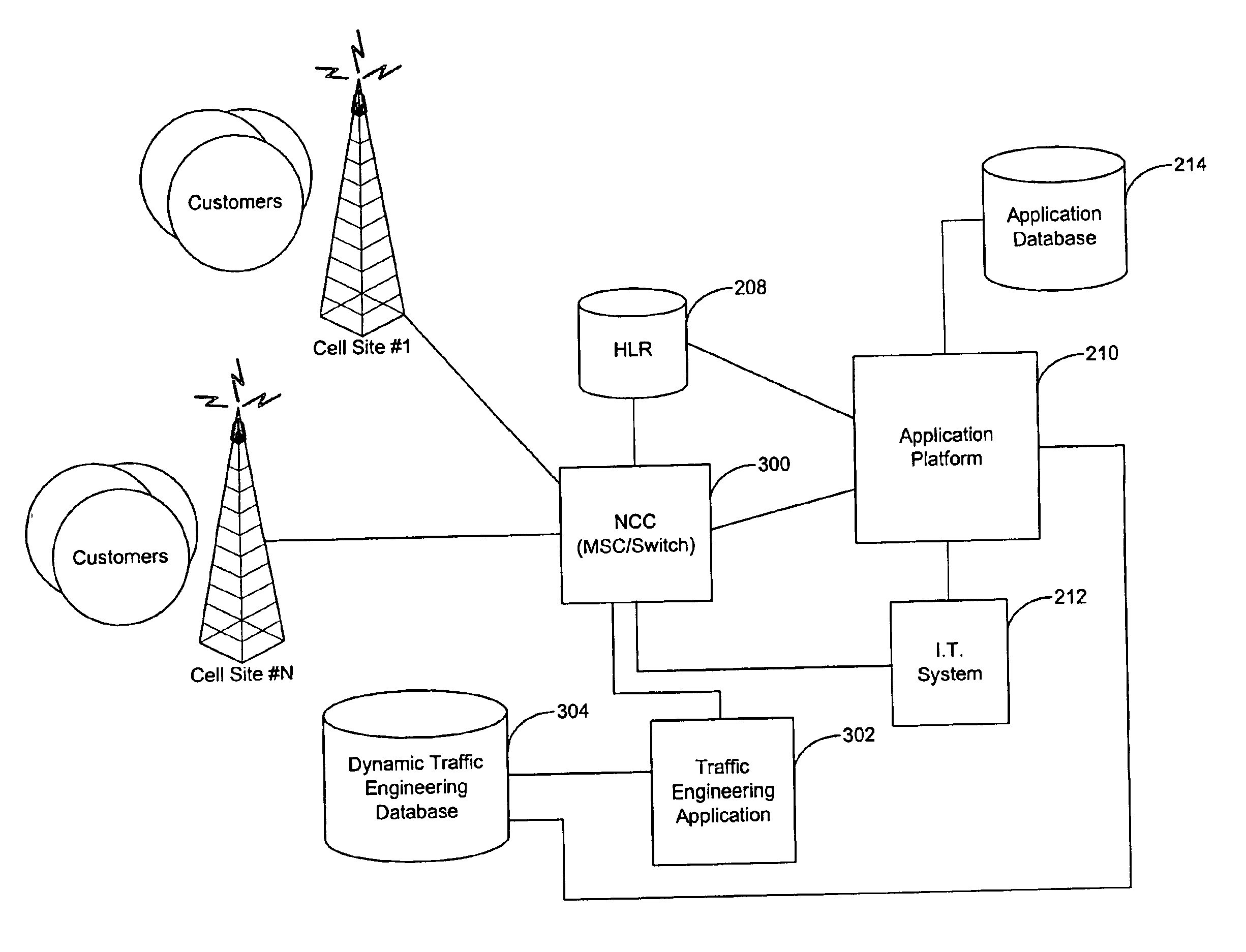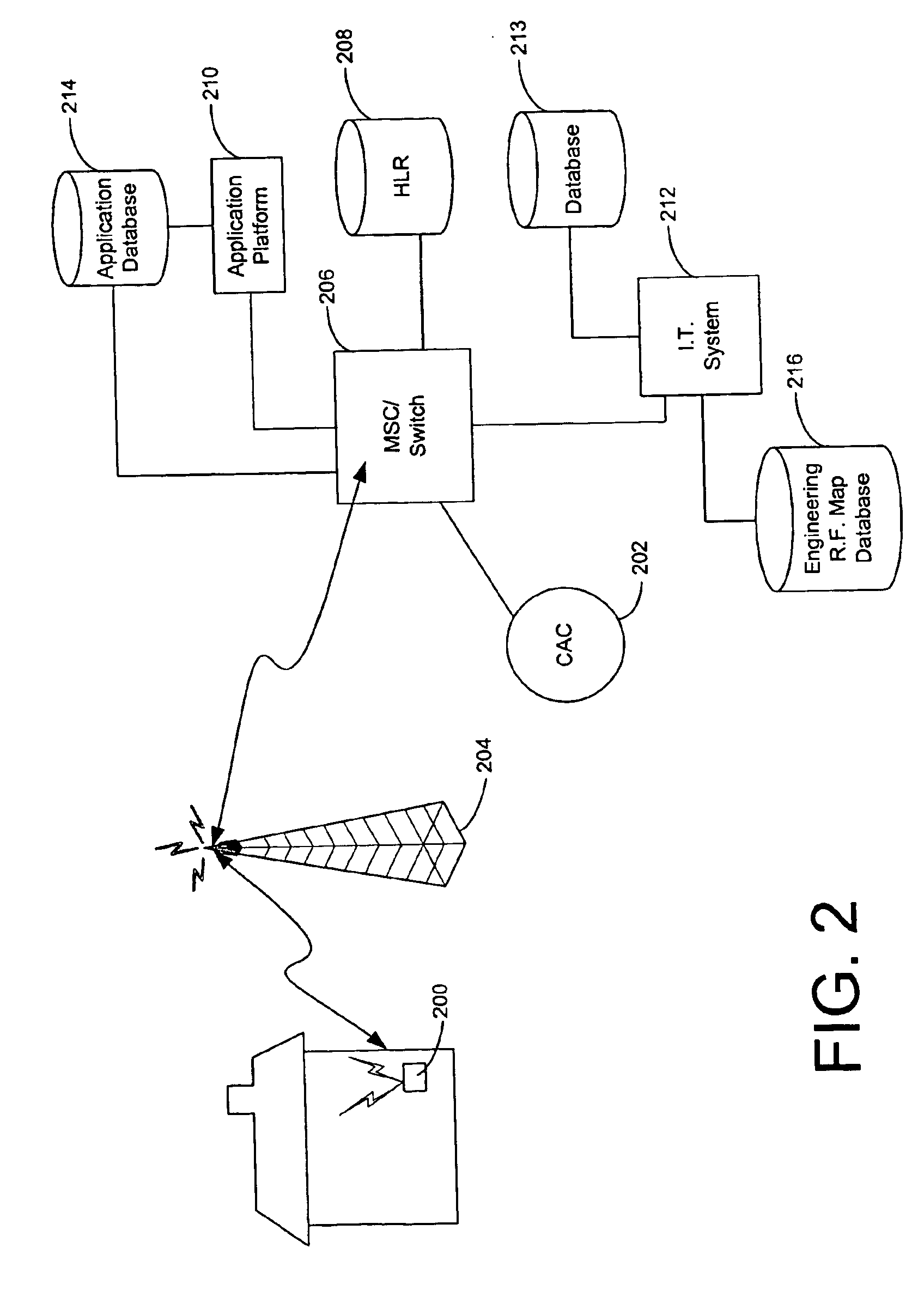Apparatus and method for providing dynamic communications network traffic control
a dynamic communication network and traffic control technology, applied in the field of telecommunications, can solve the problem that the scd lacks the unlimited handoff capability, and achieve the effect of less expensive operation, less expensive to provide, and easy to activa
- Summary
- Abstract
- Description
- Claims
- Application Information
AI Technical Summary
Benefits of technology
Problems solved by technology
Method used
Image
Examples
Embodiment Construction
[0034]The Stationary Cellular Device (SCD)
[0035]FIG. 1 is a schematic of an exemplary stationary cellular device (SCD) 100. The SCD 100 includes many of the components common to a typical cellular or cordless telephone. The SCD 100 typically includes a handset (not separately shown), including an earpiece and a mouthpiece. Separate from or integrated with the handset, the SCD 100 includes a base 102. The base 102 houses a transmitter 104, a cellular receiver 106, a baseband processor 108, memory 110, an acoustic transducer 112, a speaker 114, an AC / DC power converter 116, an antenna 118, and optionally, a rechargeable or replaceable battery 120. A keypad 122 is integrated with to the base 102, handset, or both. The keypad 122 includes buttons 124 common to telephone keypads, and may optionally include a screen. In “corded” embodiments, the handset of the SCD 100 may be physically connected to the base 102 via a standard telephone handset cord. Alternatively, the SCD 100 may be “cord...
PUM
 Login to View More
Login to View More Abstract
Description
Claims
Application Information
 Login to View More
Login to View More - R&D
- Intellectual Property
- Life Sciences
- Materials
- Tech Scout
- Unparalleled Data Quality
- Higher Quality Content
- 60% Fewer Hallucinations
Browse by: Latest US Patents, China's latest patents, Technical Efficacy Thesaurus, Application Domain, Technology Topic, Popular Technical Reports.
© 2025 PatSnap. All rights reserved.Legal|Privacy policy|Modern Slavery Act Transparency Statement|Sitemap|About US| Contact US: help@patsnap.com



